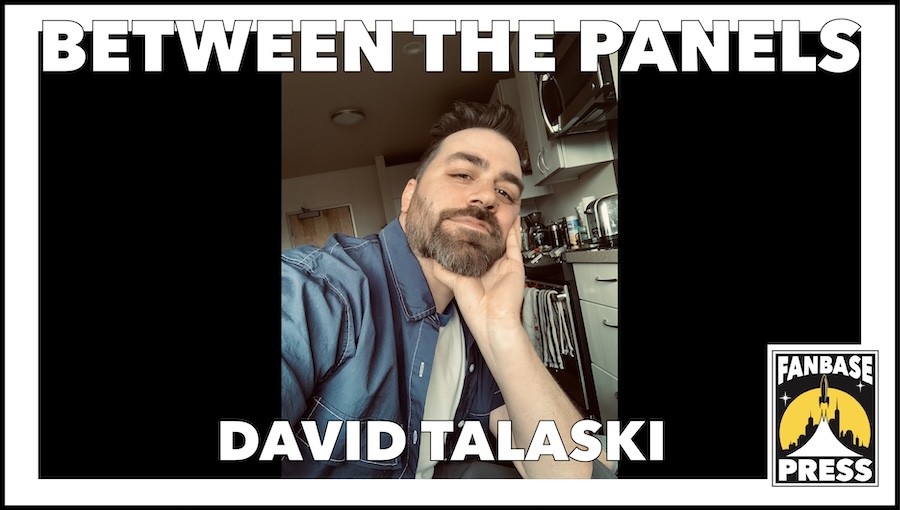“Between the Panels” is a monthly interview series focusing on comic book creators of all experience levels, seeking to examine not just what each individual creates, but how they go about creating it.
With the rise of variant comics covers in recent years, certain artists have become known for their memorable designs. David Talaski is one such name, whose striking, colorful images consistently stand out in a crowded marketplace.
First off, the basics…
Your specialties (artist/writer/letterer/inker/etc.): Artist
Your home base: Portland, OR
Website: davidtalaski.carrd.co/
Social Media
Instagram: @davidtalaskidraws
Twitter: @DavidTalaski
Fanbase Press Contributor Kevin Sharp: We start with the same question for all guests: Why comics? What does this medium offer you as an artist that keeps you coming back?
David Talaski: I like the freedom comics offer. When working in games, animation, and so on, there’s usually an expectation to match a unified ‘look’. Doing comic covers, l get a lot of artistic liberty to approach them how I want to. I mean it’s ultimately up to the client, but they strongly encourage the artists to present their own ideas either partially or fully, but almost always in a way that feels like a genuine contribution — a bonus of working on small team projects. Also what other medium allows you to go from superheroes one week, horror the next, romance, sci-fi, so on? I get to try my hand at a little bit of everything.
KS: You’re certainly known for your striking covers. To flip it around, when you’re looking at a rack of covers what elements draw your eye to them?
DT: Most of the time, I’m a sucker for just a character on a simple background. It’s hard to stand out in a sea of books, so something minimal usually grabs me. A beautifully realized illustration of a character with great design and characterization just hits.
KS: Do you have any favorite cover artists, of all time and/or currently working?
DT: Adam Hughes, Tran Nguyen, Kevin Wada, and Terry Dodson are some of my favorites at doing gorgeous character illustrations. I also love texture and expressive brushwork. Bill Sienkiewicz is the paint texture master and my all-time favorite at doing this, along with Peach Momoko and [Julian] Totino Tedesco. Totino’s cover run on Daredevil specifically has inspired me greatly in not shying away from some good, brushy texture in my own work. Impactful use of color is another technique Sienkiewicz and Tedesco use masterfully and will always pull my eye. The way they both use the color red on Elektra and Daredevil covers to pull focus is so masterfully done.
KS: For readers who may not be familiar with the process, can you walk us through the process of a cover assignment? I assume the publisher reaches out, but how specific are their requests usually vs. how much is left to you as the artist?
DT: They shoot me an email with an offer but the amount of direction I get really depends on the situation. Say it’s a variant cover, more often than not I get a pretty hands-off approach from publishers. I might get a request for a character but they let me come up with my own concepts completely. Sometimes, they have a specific idea in mind, but that can be as simple as ‘make it 1930s-looking’ to ‘blank character approaching blank character in a cornfield’. Both of those being actual examples.
Main covers are when a publisher gets a little more involved at the idea phase. My editor might throw me some story beats or a synopsis of the issue, or on rare occasion a script, though typically those aren’t done yet when I’m doing the covers. Often, they’ll throw out a general concept in a sentence or two, but I’m free to interpret that in my own way, or even offer up something different. In my experience, my editors have been very open to suggestions and collaboration.
From there, I’ll submit anywhere from three to ten sketches, and their team selects from those with maybe a note. Then, I create the final art in about a work week’s time, submit, and await feedback and/approval.
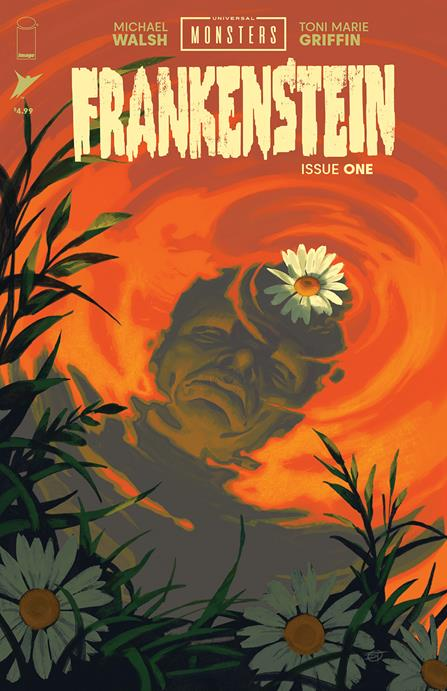
KS: Rather than ask you to play favorites with your own work, can you talk about one cover you’ve done that you’re proud of and what makes it work — as objective as you can be on the last point?
DT: I did a variant for Frankenstein #1 from Skybound that I’m really proud of. It’s just a floating white flower on a disturbed water surface, with the face of the monster reflecting back. It references a pivotal character moment in the film but I think the message comes across whether you know the reference or not. The white flower as a symbol of innocence over a distorted visage of the monster who’s tragically misunderstood. It’s simple but communicates a lot. From a design standpoint, the contrast of the white flower on the orange water pulls focus to the two main elements, the flower itself and the monster’s face. The ripples in the water reinforce the focus of those two elements. The design working to make sure the story is clear I think makes this cover work.
KS: Tell us about when comics entered your life as a reader. Did you have access to traditional floppies and/or did you find them through other avenues like newspaper strips?
DT: I mostly read Peanuts and Calvin and Hobbes growing up. I didn’t have a ton of access to floppies aside from a few my older brother had and what I could get a hold of from Target, which they used to carry back in the ’90s. I really got into comics as an adult when I met my now husband. We would walk down to the comic shop in his neighborhood weekly to get our books. Series like Saga, Low, and Rat Queens got me hooked initially, then I fell into an X-Men rabbit hole that I’m still falling down. The X-Men animated series and X-Men Evolution were some of the most impactful shows of my youth, so it was destiny for me to get to the comics eventually.
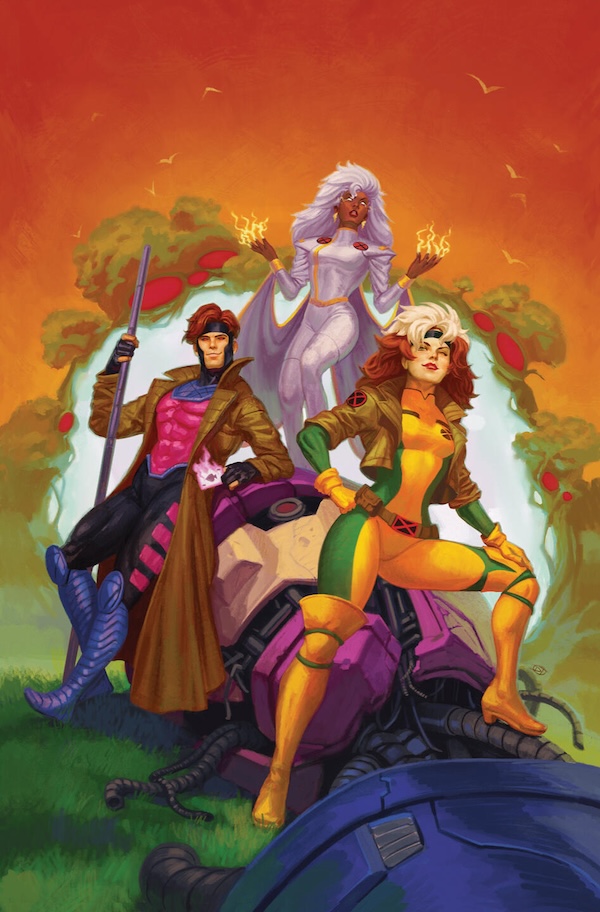
KS: What did your creative life look like as a kid?
DT: There wasn’t a time in my life where I don’t remember drawing, making figurines with Sculpy, heck even had a brief balloon animal period. A very vivid memory for me was going to my grandparents’ house every day after school and being given reams of perforated copy paper to draw on while I watched cartoons. I was always making up characters, like original Mutants, faux JRPG casts, Tolkien-ish elves, fairy folk, whatever I was into at the time.
KS: Did you ever try making your own sequential comics specifically?
DT: The only sequential art I remember making was in high school, but they were more like storyboards than comics. I used to want to work in animation, my major in college actually, and I was planning a dream project of my own Fantasia sequence. I don’t remember the story exactly, but I’m pretty sure it was just a rip-off of the Firebird Suite.
KS: Can you think of a certain comic story that had a real impact on you as a reader?
DT: Well, it wasn’t from that long ago, but Sina Grace and Alessandro Vitti did a run of Iceman, the character’s first solo run after coming out in the comics. I had only been out myself for a couple years, and the way Iceman, also coming out as an adult, had to reconcile or not reconcile his relationships with people in his life was all too relatable. It was messy for Iceman and not everything was wrapped up with a tidy bow, and that’s exactly what it felt like for me at the time. It stuck with me.
KS: What about the idea of an artistic career? At what point did that arise as a realistic option on your radar?
DT: No one in my immediate family has gone to college, or had any kind of creative career, so the thought of going into art professionally felt very unrealistic growing up. In my teen years, my older brother had a friend who was getting a graphic design degree at the Art Institute of Portland (RIP), and for the first time I saw someone just a few degrees from me going to school for art. Suddenly, it felt a little less fanciful and something I could look into and possibly make work.
Once I started doing some research on what programs were on offer, there wasn’t any other option in my mind, so much so that I ended up applying for early admissions to the Art Institutes Animation Program before my junior year. I was already drawing just about everyday, teaching myself Photoshop and Flash, making my own characters, so it kind of just made sense once I realized there was a path to a career using these skills.
KS: Given the family background, was there support for this pursuit of yours? I know many parents would prefer a “safer” career option than the creative arts.
DT: My parents were very supportive. I remember my dad wishing I would have chosen to be like an accountant, but he supported me in spite of this. They tell me now that I was self-disciplined as a kid, so I think they trusted I would follow through on it even if it was a bit “risky”.
KS: Hypothetically, what would have been an acceptable Plan B career path if art had never worked out?
DT: I think about this all the time, and I have a hard time figuring it out. I can maybe see myself getting into teaching at some point. A lot of people in the arts either end up teaching in their later career or even during. I don’t know if it’s something I would enjoy, but it’s on my mind.
KS: Did you have a specific career vision in mind for after you graduated the animation program? I’m wondering where the idea of working in comics specifically entered your thinking.
DT: I focused a lot on 2D animation and visual development in school, so I figured I would end up working at an animation studio doing either of those things. I ended up at a local studio doing outsource art for video games. Most of the skills you learn in animation can apply to a lot of other creative industries, so even though it wasn’t what I wanted to do, it was in the ballpark. I ended up being there for about 10 years as a lead for the 2D art team.
My interest in comics was building up in the background during my time there. Aside from just reading comics, I specifically remember following Kevin Wada’s career. I was a big fan of his X-Men fan-art over on Tumblr and then over time I watched that lead to him doing official cover work. That’s probably what planted that seed in the back of my mind that it might be something I wanted or “could” do.
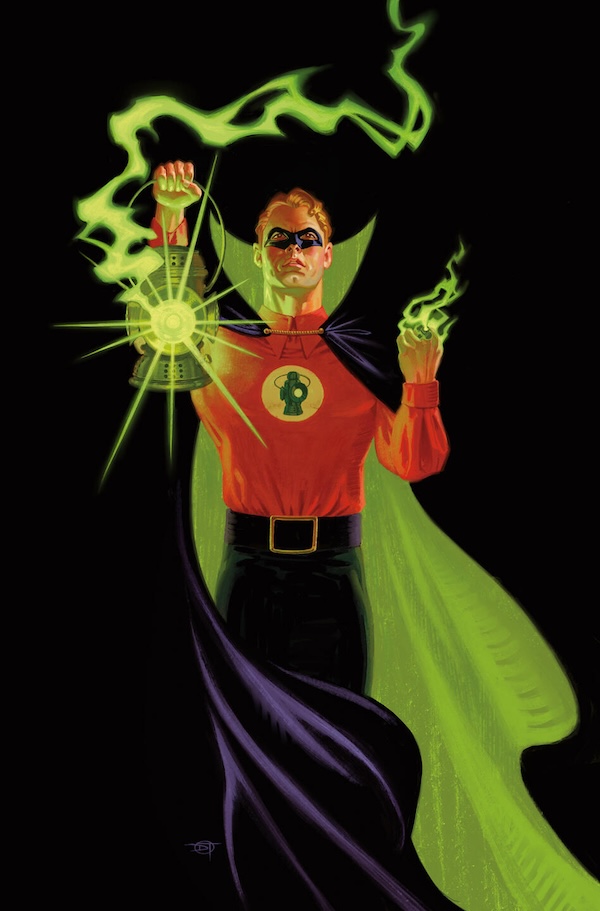
KS: Please tell us how your first paid/pro comics gig came about. We’ve talked before in this series about the balance between putting yourself out there to be found and the kind of “happy accidents” that can open doors for aspiring pros.
DT: I was just selling fan art of superhero pinups at my local Comic Con when I got my first comic gig. I started tabling at RCCC in 2018 to get out of a funk I was feeling at my studio job. The pinups did well the first year, so I came back with some more in 2019, and next thing I know, Steve Orlando is stopping by my table to buy prints and swap professional contact info with me. About half a year later, I got a message from him asking if I wanted to do a variant cover for his creator-owned book Commanders in Crisis. The ball just rolled from there.
So yeah, very much a “happy accident” though I think there’s a lot you can do to put yourself in a better spot for those accidents to happen. For one, just doing a table at the con gets you in front of comic industry folks. I know so many other artists who got their first comic gig at a convention. Heck, I remember someone from DC giving their card to a guy next to me at one of those early cons. Another thing that helped was a strong online presence. My pinups around that time had a moment on social media, which kept my work in front of comic folks online. Like I mentioned, I got that gig about six months after meeting Steve, so posting with some regularity online keeps you in people’s mind so they won’t forget you. I don’t know if that was needed or not for Steve specifically, but it helped a lot immediately following that first gig and played a big role in me continuing to get cover work after.
KS: Do you remember how you felt at the time, not about the contact with Steve, but the actual assignment? Nervous? Ready to roll? Some combination?
DT: I was nervous, for sure. I did a lot of “art tests” at my studio job, so I was used to taking on new clients and assignments, but this was a brand-new industry and one that could lead to potential new career paths. I really felt the pressure to make a good first impression.
KS: These days, do you have a standard work routine? Are there times of day/night you find the creative juices flow best, or does this depend more on deadlines?
DT: I tend to get my best drawing time in at night, right after dinner. It’s not ideal, but it’s when I probably do my best work. Despite that, I do try to work a regular-ish work day and get the bulk of my work done then. I would say my day work is a lot of the heavy lifting, figuring out the technical parts of the piece or the foundation, and the evening is when I get to make it pretty.
KS: Thumbs up or thumbs down: listening to music or other background noise when you draw?
DT: Thumbs way up. I can’t work without background noise. If I really need to focus, I’ll just put on a random lo-fi channel on YouTube. Most of the time, I listen to podcasts like The Bald and Beautiful, Very Delta, House of R, or deep-dive videos into random topics. I love a good Tolkien deep-dive channel or defunct theme park shows. If I just watched a movie or show, I try to find a video essay about it.
KS: Imagine a Comic Book Hall of Fame and you get to induct one title that you think represents the medium at its very best. What gets your plaque?
DT: Witch Hat Atelier by Kamome Shirahama. It’s hands down the most beautifully drawn series on my shelf matched by its compelling and heartwarming characters and story. I love the world Shirahama created.
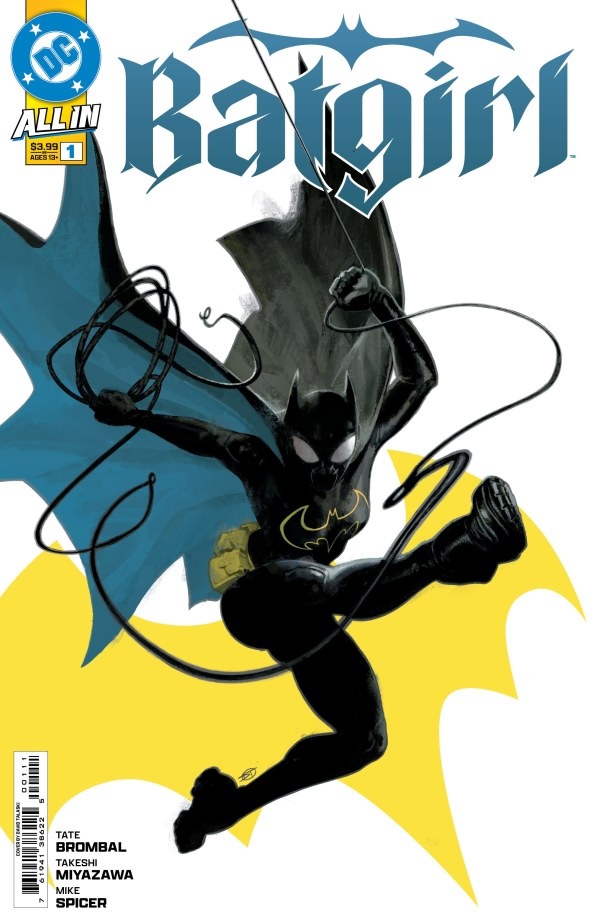
KS: As we wrap up, please let readers know what you have out now and what they should be on the lookout for coming up.
DT: The Alan Scott: The Green Lantern trade paperback is out now, with great story and art by Tim Sheridan and Cian Tormey. Currently, I’m doing the covers for Tate Brombal and Takeshi Miyazawa’s Batgirl book. Aside from that, I’m drawing up a bunch of variant covers over at DC, so expect a lot of Superman, Wonder Woman, and more.

